Archive
Vladimir Kadulin
- Vladimir
- Kadulin
Владимир Федорович Кадулин, Наядин, Nayadin, Dulin, Val’demar, Mitritch, Mitritch Karelin
- 15-12-1884
- Kamieniec Podolski (UA)
- 20-11-1957
- Manhattan (US)
- PainterCaricaturist
When it comes to Russian émigré caricaturists in Istanbul, Vladimir Kadulin who worked under the pseudonym Nayadin for the almanac Zarnitsy is the first to come to mind.
Word Count: 28
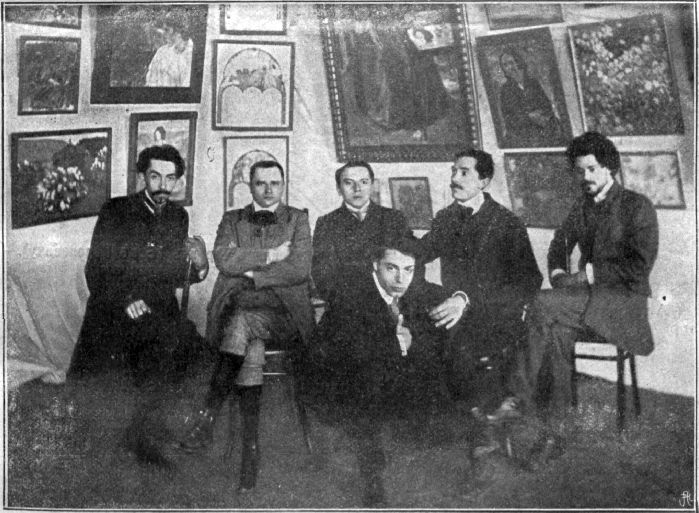
The group of initiators of the convocation of the All-Russian Congress of Artists, Kiev, 1910. Vladimir Kadulin is on the far right (Kievskaya Mysl’, no.16, 18 April 1910). 
The group of initiators of the convocation of the All-Russian Congress of Artists, Kiev, 1910. Vladimir Kadulin is on the far right (Kievskaya Mysl’, no.16, 18 April 1910). 
One of the caricatures by Nayadin (Vladimir Kadulin), Before The Storm: “The newspapers: ‘Many millions of peasants, sweeping away everything in their path, go to Moscow.’ Lenin: Oh! It seems to me that this time even foreign umbrellas won't help us…” (Zarnitsy, no. 21, 4 September 1921). 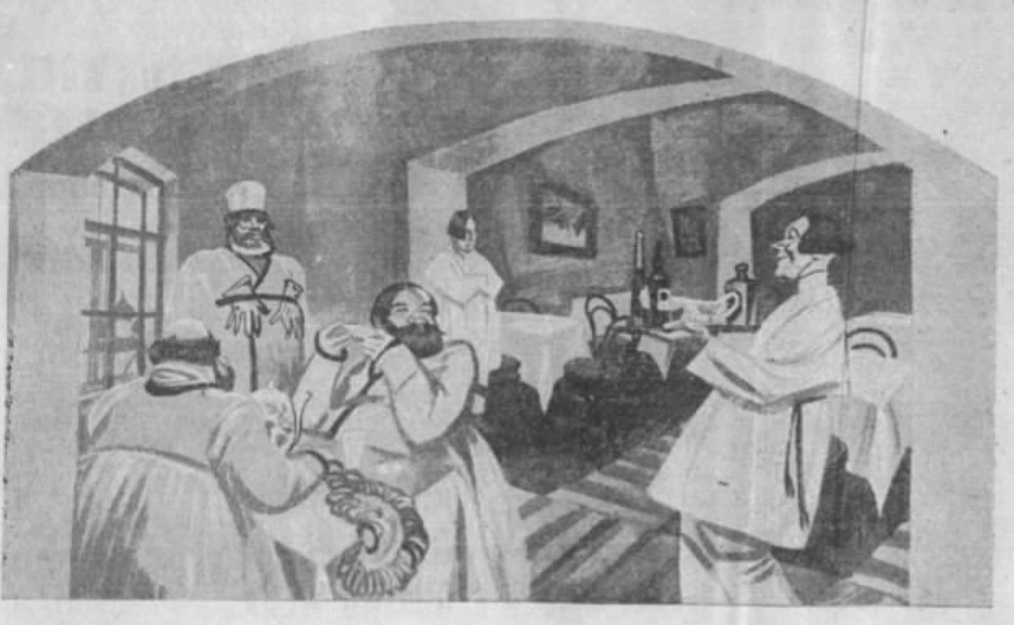
One of the wall paintings by Vladimir Kadulin in Katinka Restaurant in Tampa, Florida (Tampa Bay Times, 8 November 1926, p. 18). 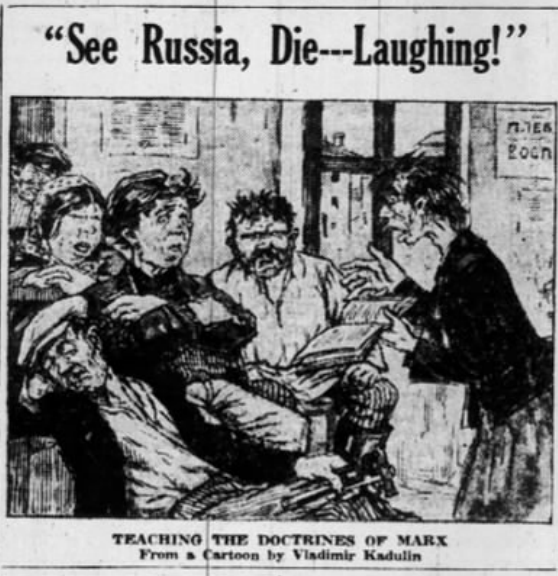
Teaching The Doctrines of Marx by Vladimir Kadulin (Sioux City Journal (Sioux City, Iowa), 20 September 1931, p. 27). 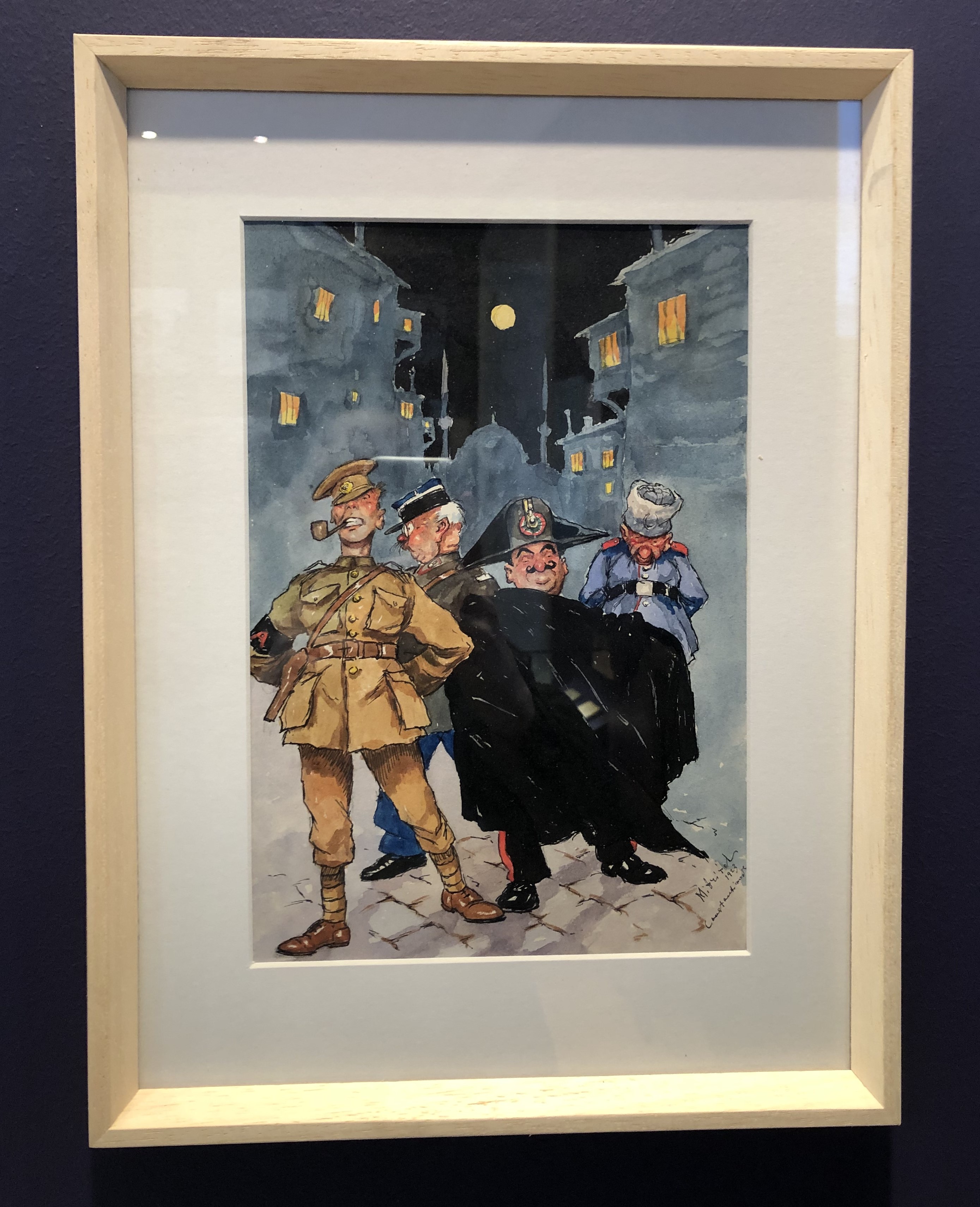
One of the caricatures by Mitritch/Vladimir Kadulin (the Occupied City/Meşgul Şehir Exhibition, Istanbul Araştırmaları Enstitüsü). (Photo: Ekaterina Aygün, 2023). 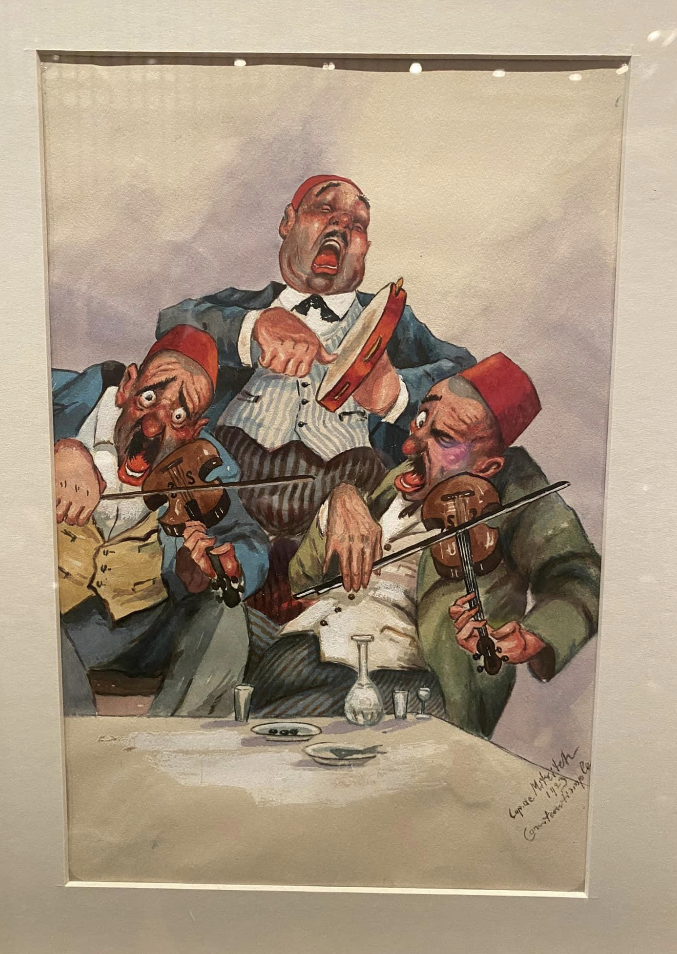
One of the caricatures by Mitritch/Vladimir Kadulin (the Occupied City/Meşgul Şehir Exhibition, Istanbul Araştırmaları Enstitüsü). (Photo: Ekaterina Aygün, 2023). Chebyshev, Nikolay. Blizkaya Dal’: Vospominaniya. Imp. de Navarre, 1933.
Miller, Vera. “Vladimir Fedorovich Kadulin.” findagrave.com, https://www.findagrave.com/memorial/184348086/_. Accessed 3 June 2020.
Nayadin. “Konstantinopol’skiye Dni. Venizelos.” Zarnitsy, 28 August 1921, pp. 6–8.
Üçgül, Sevinç. “Izdatel’skaya deyatel’nost’ Russkoy emigratsii v Stambule: po materialam al’manaha Zarnitsy.” Russkaya belaya emigratsiya v Turtsii vek spustya 1919–2019, edited by Türkan Olcay, DRZ, 2019, pp. 194–221.
Zhukov, V. “Student İGİ sto let nazad glazami hudojnika-karikaturista V.F. Kadulina.” Za Stroitel’niye Kadry, April 2017, p. 1.
Word Count: 78
My deepest thanks go to Slavonic Library (Slovanská knihovna) in Prague.
Word Count: 11
Istanbul, Ottoman Empire/Turkey (?–1923); New York, United States (1923–1957).
Appartements du Tunnel (now Tünel Meydanı Sk. 2/B), Beyoğlu, Istanbul (studio).
- Istanbul
- Ekaterina Aygün. "Vladimir Kadulin." METROMOD Archive, 2021, https://archive.metromod.net/viewer.p/69/2949/object/5138-10440402, last modified: 29-05-2023.
-
Türk Sanatı. Başlangıcından Günümüze kadarBookIstanbul
The Viennese Ernst Diez lived in Turkey from 1943 to 1950. His textbook Türk Sanatı (1946) stirred a debate on Turkish art and its relations to Byzantine and Armenian art.
Word Count: 28
Russkiy v Konstantinopole/Le Russe à ConstantinopleGuide-bookIstanbulThe guide-book was created for Russian-speaking refugees who had to leave their country and settle in Constantinople.
Word Count: 17
Union of Russian Painters in ConstantinopleAssociationIstanbulThe Union existed for less than two years but in that short space of time a tremendous amount of work was done by its members, refugees from the Russian Empire.
Word Count: 30